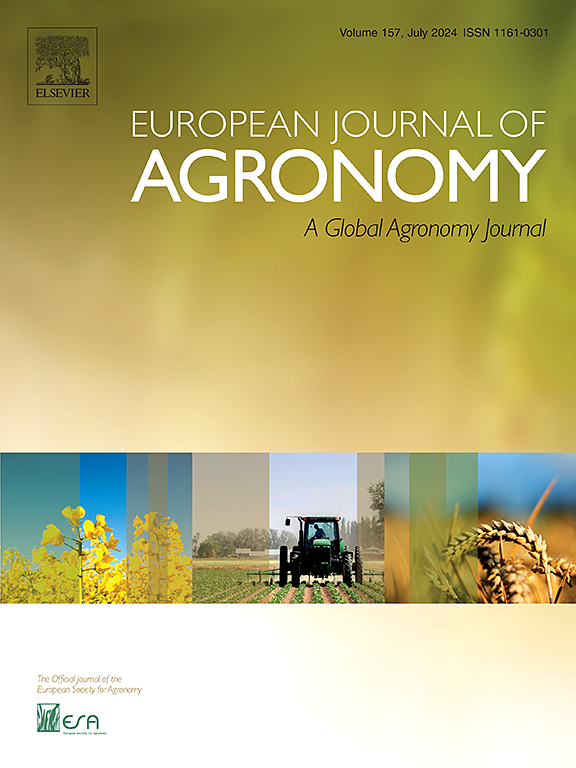基于样本生成和集成学习的东北主要粮食作物制图
IF 5.5
1区 农林科学
Q1 AGRONOMY
引用次数: 0
摘要
东北地区是中国重要的粮食生产基地,在保障粮食安全中发挥着至关重要的作用。玉米、水稻、大豆三大粮食作物(MGC)占东北粮食总产量的98.7% %。然而,该地区缺乏高分辨率的MGC地图,这对分析作物种植格局的时空变化和制定农业政策至关重要。本研究旨在结合光学和合成孔径雷达(SAR)图像,采用基于样本生成和集成学习策略的方法,绘制2019 - 2023年东北地区MGC (NE- mgcm) 10米分辨率地图。NE-MGCM具有较高的制图精度,5年平均总体精度(OA)为94.96%,平均Kappa系数为0.9264。玉米、水稻和大豆的生产者准确度(PA)分别为91.12% ~ 94.55%、94.89 ~ 96.36%和94.53 ~ 95.69%。与四个公共数据集相比,NE-MGCM表现出优越的整体性能和与统计数据的高度一致性。NE- mgcm有效跟踪东北地区MGC的时空分布变化,为粮食安全和农业管理提供有力的数据支持。本文章由计算机程序翻译,如有差异,请以英文原文为准。
Major grain crop mapping in Northeast China using sample generation method and ensemble learning
Northeast China (NE) is a vital grain production base, playing a crucial role in ensuring food security. Maize, rice, and soybean, the three major grain crops (MGC), account for 98.7 % of NE’s total grain output. However, high-resolution MGC maps for this region are lacking, which are essential for analyzing spatial and temporal changes in crop planting patterns and developing agricultural policies. This study aims to create a 10-meter resolution map of MGC in NE (NE-MGCM) from 2019 to 2023 with a method based on sample generation and ensemble learning strategies, combined with optical and synthetic aperture radar (SAR) images. NE-MGCM achieves high mapping accuracy, with a five-year average overall accuracy () of 94.96 % and an average coefficient of 0.9264. The producer accuracy () for maize, rice, and soybean ranged from 91.12 % to 94.55 %, 94.89–96.36 %, and 94.53–95.69 %, respectively. Compared to four public datasets, NE-MGCM demonstrates superior overall performance and high consistency with statistical data. NE-MGCM effectively tracks the spatial and temporal distribution changes of MGC in NE, providing robust data support for food security and agricultural management.
求助全文
通过发布文献求助,成功后即可免费获取论文全文。
去求助
来源期刊

European Journal of Agronomy
农林科学-农艺学
CiteScore
8.30
自引率
7.70%
发文量
187
审稿时长
4.5 months
期刊介绍:
The European Journal of Agronomy, the official journal of the European Society for Agronomy, publishes original research papers reporting experimental and theoretical contributions to field-based agronomy and crop science. The journal will consider research at the field level for agricultural, horticultural and tree crops, that uses comprehensive and explanatory approaches. The EJA covers the following topics:
crop physiology
crop production and management including irrigation, fertilization and soil management
agroclimatology and modelling
plant-soil relationships
crop quality and post-harvest physiology
farming and cropping systems
agroecosystems and the environment
crop-weed interactions and management
organic farming
horticultural crops
papers from the European Society for Agronomy bi-annual meetings
In determining the suitability of submitted articles for publication, particular scrutiny is placed on the degree of novelty and significance of the research and the extent to which it adds to existing knowledge in agronomy.
 求助内容:
求助内容: 应助结果提醒方式:
应助结果提醒方式:


